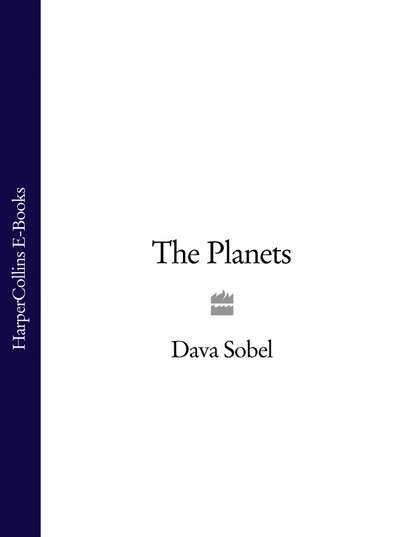По всем вопросам обращайтесь на: info@litportal.ru
(©) 2003-2024.
✖
The Planets
Автор
Год написания книги
2018
Настройки чтения
Размер шрифта
Высота строк
Поля
To faint in the light of the sun she loves,
To faint in his light, and to die.
Alfred, Lord Tennyson, ‘Maud’
Now ‘morning star’, now ‘evening star’, the bright ornament of the planet Venus plays prelude to the rising Sun, or postscript to the sunset.
For months at a time Venus will vault the eastern horizon before dawn and linger there through daybreak, the last of night’s beacons to fade. She begins these morning apparitions close to the Sun in time and space, so that she arrives in a lightening sky. But as the days and nights go by, she comes up sooner and ventures further from the Sun, rising while Dawn is still a distant idea. At length she reaches the end of her tether, and the Sun calls her back, making her rise a little bit later each night, till she again verges on the day. Then Venus vanishes altogether for the time it takes her to pass behind the Sun.
After fifty days, on average, she reappears at the Sun’s other hand, in the evening sky, to be hailed as evening star for months to come. Shimmering into view as the Sun goes down, Venus hangs alone in the twilight. The first few sunsets find her bathed in the afterglow colours of the western horizon, but at length Venus comes to light already high overhead, where she dominates night’s onset. Who knows how many childhood wishes are squandered on that planet before the gathering darkness brings out the stars?
Thou fair-haired angel of the evening,
Now, whilst the sun rests on the mountains, light
Thy bright torch of love; thy radiant crown
Put on, and smile upon our evening bed!
Smile on our loves, and, while thou drawest the
Blue curtains of the sky, scatter thy silver dew
On every flower that shuts its sweet eyes
In timely sleep. Let thy west wind sleep on
The lake; speak silence with thy glimmering eyes,
And wash the dusk with silver.
William Blake, ‘To The Evening Star’
Hours into the night, Venus still outshines every other light, unless the Moon intrudes to best her. The Moon appears bigger and brighter, by virtue of lying about one hundred times closer to us, though Venus is the larger and the fairer by far. Venus’s shroud of yellow-white cloud reflects light much more effectively than the dun-coloured, dust-covered surface of the Moon. Virtually 80 per cent of the Sunlight lavished on Venus just skitters off her cloud tops and spills back into space, while the Moon beams back a mere 8 per cent.
The remarkable brightness of Venus gains lustre from her nearness to Earth. Venus comes within twenty-four million miles of Earth at closest approach – closer than any other planet. (Mars, Earth’s second nearest neighbour, always stays at least thirty-five million miles away.) Even when Venus and Earth recede as far from each other as possible, separated by more than one hundred and fifty million miles, Venus retains her superlative brilliance for Earthbound observers. On the scale of ‘apparent magnitude’ astronomers use to compare the relative brightness of heavenly bodies, Venus far exceeds the most luminous stars.* (#litres_trial_promo)
What strong allurement draws, what spirit guides,
Thee, Vesper! brightening still, as if the nearer
Thou com’st to man’s abode the spot grew dearer
Night after night?
William Wordsworth, ‘To the Planet Venus’
The nearer Venus draws to Earth, the brighter she appears, naturally enough. Yet as her glow crescendos, the globe of Venus actually diminishes from full to gibbous through quarter and then crescent phase. Like the Moon, Venus appears to change shape as she moves along her orbit, and by the time she reaches her closest, most vivid aspect in our skies, only about one-sixth of her visible disk remains illuminated. But proximity stretches this little sliver to a great length, allowing the perceived brightness of Venus to increase even as she thins and wanes away.
Watching Venus through a telescope or binoculars every evening over a period of months shows how she gains in height and brightness as her disk shrinks, and vice versa. Little else becomes apparent, however, since none of Venus’s surface features can ever be discerned by sight through her cloud deck. Thus the very clouds that account for her blatant visibility also act to veil her.
Those who know just where to look can sometimes pick out the steady white light of Venus against the light blue background of a fully daylit sky. Napoleon spotted Venus that way while giving a noon address from the palace balcony at Luxembourg, and interpreted her daytime venue as the promise (later fulfilled) of victory in Italy.
On Moonless nights when Venus is nigh, her strong light throws soft, unexpected shadows onto pale walls or patches of ground. The faint silhouette of a Venus shadow, which evades detection by the colour-sensitive inquiry of a direct gaze, often answers to sidelong glances that favour the black-and-white acuity of peripheral vision. But no matter how avidly you hunt the elusive Venus shadow with eyes averted and downcast, your search may still prove vain, while overhead, as though to mock you, the planet’s dazzle mimics the landing beam of an oncoming aeroplane, even triggers police reports of unidentified flying objects.
I stopped to compliment you on this star
You get the beauty of from where you are.
To see it so, the bright and only one
In sunset light, you’d think it was the sun
That hadn’t sunk the way it should have sunk,
But right in heaven was slowly being shrunk
So small as to be virtually gone,
Yet there to watch the darkness coming on-
Like someone dead permitted to exist
Enough to see if he was greatly missed.
I didn’t see the sun set. Did it set?
Will anybody swear that isn’t it? …
Robert Frost, ‘The Literate Farmer and the Planet Venus’
Ancient legends celebrated the beauty of planet Venus by declaring her not only divine but also womanly – perhaps because her visitations generally lasted a significant nine months. Although Venus orbits the Sun in just 224 Earth-days, the Earth’s own orbital motions help govern Venus’s observed behaviour. As seen from the moving Earth, Venus averages 260 days as either morning star or evening star, coinciding with the human gestation period of 255 to 266 days.
The Chaldeans called the planet Ishtar, the love goddess ascending the heavens, and to the Semitic Sumerians she was Nin-si-anna, ‘the Lady of the Defences of Heaven’. Her Persian name, Anahita, associated her with fruitfulness. The dual (dawn and dusk) nature of Venus cast her by turns as virgin or vamp to her worshippers.
Ishtar metamorphosed into Aphrodite, the Greek incarnation of love and beauty. She became the Venus of the Romans, revered by the historian Pliny for spreading a vital dew to excite the sexuality of earthly creatures. In China, Venus blended male and female genders in a married couple consisting of the husband evening star, Tai-po, and his wife, the morning star, Nu Chien.
Only the Mayas and the Aztecs of Central America seem to have seen Venus as consistently male, the twin brother of the Sun. The rhythmic association between Venus and the Sun inspired meticulous astronomical observations and complex calendar reckoning in those cultures, as well as blood rituals to recognize the planet’s descent into the underworld and subsequent resurrection.
In North America, among the Skidi Pawnee, the veneration of Venus involved human sacrifice to ensure her return. The last teenage girl known to have died in such devotions was kidnapped and ceremonially killed on 22 April 1838.
As a symbol of loveliness, Venus figures in three paintings by Vincent Van Gogh. His Starry Night of June 1889, the best-known example, depicts Venus as the bright orb low to the east of the village of Saint-Rémy, during the time the artist’s dementia confined him to an asylum there. Art historians and astronomers have also definitively identified Venus in Road with Cypress and Star, which Van Gogh completed in mid-May 1890, the day before he left Saint-Rémy. A few weeks later, in Auverssur-Oise, near Paris, where he created eighty works in the two months before his suicide, Van Gogh depicted Venus for the last time, inside a scintillating halo, hovering above the west chimney of White House at Night.
Venus voyages … but my voice falters;
Rude rime-making wrongs her beauty,
Whose breasts and brow, and her breath’s sweetness







